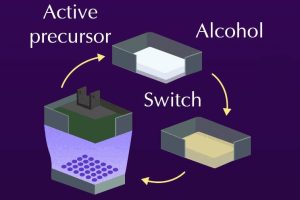Imec and Rapidus, the Japanese government-backed semiconductor startup targeting 2nm processing, agreed a technology collaboration at a signing ceremony earlier this month in Tokyo. Pictured are: Jan Jambon, president of Flanders, Luc van den Hove, CEO Imec, Rapidus CEO Atsuyoshi Koike, Japan trade minister Yasutoshi Nishimura, and Rapidus chairman Tetsuo Higashi. Rapidus plans to mass-produce 2nm chips in Japan in ...
Research
The latest electronics research news from within the industry and universities from around the world.
York, Bristol and Surrey universities share £28m O-RAN development grant
The universities of York, Bristol and Surrey are to share £28 million from the government to work with Ericsson, Nokia and Samsung on developing future O-RAN networking technologies. The universities will work with UK academics and industry players to ensure future network are designed to support O-RAN to promote a more diverse and innovative telecoms market. O-RAN enables operators to ...
Imec models 3D thermal transport in 5G/6G RF devices
Imec has presented a Monte Carlo Boltzmann modeling framework that uses microscopic heat carrier distributions to predict 3D thermal transport in advanced RF devices intended for 5G and 6G wireless communication for the first time. Case studies with GaN high-electron-mobility transistors (HEMTs) and InP heterojunction bipolar transistors (HBTs) revealed peak temperature rises that are up to three times larger than ...
Siquance to build quantum computer from standard silicon ICs
CEA, the French National Centre For Scientific Research (CNRS) and CEO Maud Vinet have founded a startup called Siquance which aims to develop and commercialise a quantum computer built on microelectronics technology. Siquance is developing a quantum computer that is based on standard silicon ICs. To enable this, a disruptive technology solution was essential to transform a classical transistor so ...
Square Kilometre Array radio telescope gets an official launch
The Square Kilometre Array radio telescope got its next official launch this week, when director-general Philip Diamond travelled to the site where SKA-Low (below) will be built in Western Australia and council chair Catherine Cesarsky went to the SKA-Mid (right) site in South Africa’s Northern Cape. “The SKA project has been many years in the making,” said Cesarsky. “Today, we ...
Near-field microwave holograms predict far-field future for telescope
Near-field microwave holography has been used to characterise receiver optics at temperatures close to absolute zero before they are installed in the Simons Observatory Large Aperture Telescope in Northern Chile, which will measure cosmic microwave background. The near-field results were used to predict far-field performance of the assembly, which includes lenses, filters, a feed horn and baffles. “We developed a ...
Measuring the behaviour of electrons injected into quantum dots
Measuring the behavior of electrons injected into quantum dots promises insights into how electrons behave in complex real-world materials and could help researchers engineer devices that make possible quantum computers, say scientists from the US National Institute of Science and Technology (NIST). The researchers made multiple 3-by-3 grids of precisely spaced quantum dots, each comprising one to three phosphorus atoms. ...
Combined power and signal transmission simplifies receive end
Korea Maritime and Ocean University scientists have developed a scheme for combined power and data transmission that cuts power consumption at the receiver end. Such combined transmissions, sometimes called ‘swipt’ for ‘simultaneous wireless information and power transfer’, are proposed to interface one powered fixed point with multiple wireless IoT sensor nodes that no longer need local power sources. Pulse position ...
3d printing puts metal conductors anywhere on plastic parts
Researchers from Japan and Singapore have developed a 3D printing technique to create conductive metal patterns on the external and internal surfaces of 3D plastic structures. It does not print solid metal directly, but instead accurately positions a catalyst throughout a polymer object wherever surface metal will later be needed. Update: Harting is commercially offering a similar process using injection ...
Electrostatic actuators improved by self-polarising ferroelectrics
Electrostatic actuators that work at lower voltages could come out of research at the Tokyo Institute of Technology. These devices consist of two oppositely charged electrodes that generate a force when there is an electric field between them. “By altering the shape of their electrodes and filling the gap between them with flexible, soft materials, various configurations for electrostatic actuators ...
 Electronics Weekly Electronics Design & Components Tech News
Electronics Weekly Electronics Design & Components Tech News









